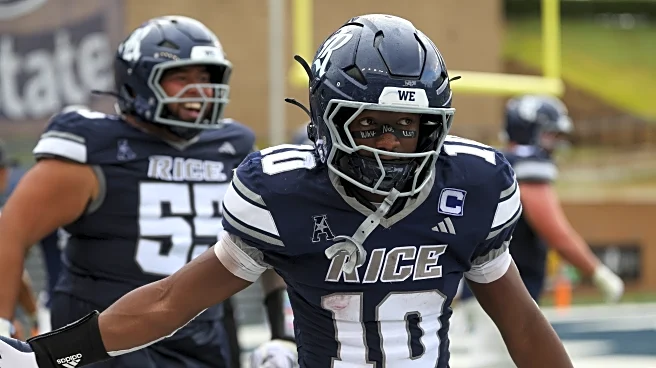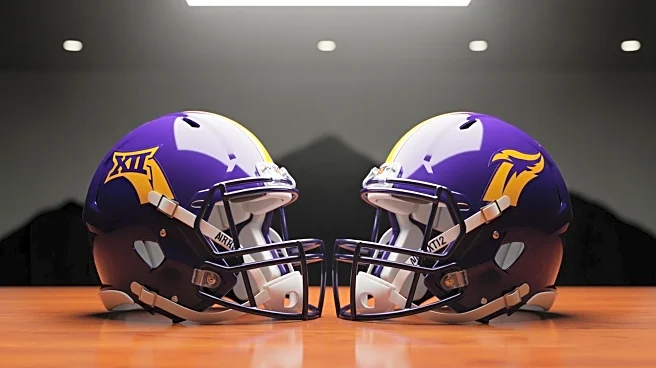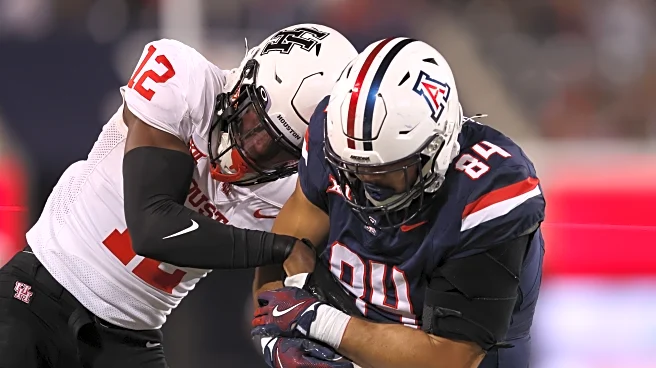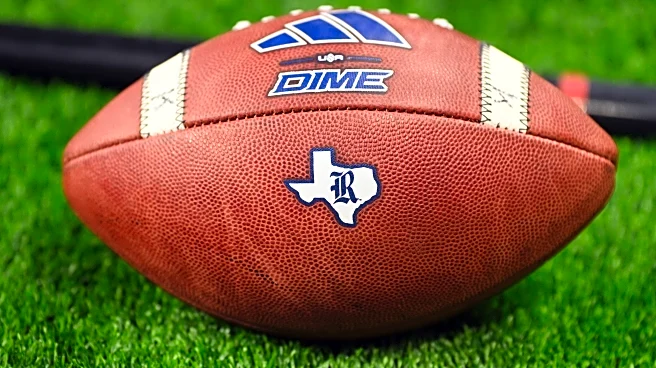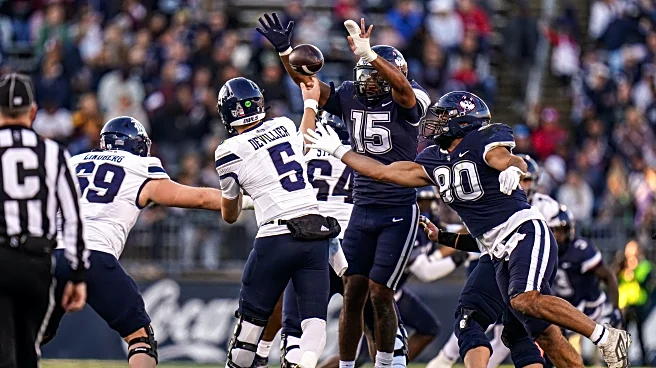What's Happening?
Rice University triumphed over the University of Connecticut (UConn) in a thrilling double-overtime college football game, ending with a score of 37-34. The game, held in Houston, saw Quinton Jackson of Rice deliver
a standout performance with 168 rushing yards and four touchdowns, including the decisive 23-yard touchdown run in the second overtime. Rice's offensive strategy was bolstered by a total of 300 rushing yards, with D’Andre Hardemann contributing a 10-yard touchdown during regulation. Quarterback Chase Jenkins added to the offensive effort with 191 passing yards and a 75-yard touchdown pass to Jackson. UConn's quarterback Joe Fagnano also had a notable performance, throwing for 344 yards and three touchdowns, but it was not enough to secure a win for the Huskies, who saw their four-game winning streak come to an end.
Why It's Important?
This victory is significant for Rice University as it breaks their two-game losing streak and marks their first win in the American Athletic Conference (AAC) this season. The win boosts the morale of the Rice team and its supporters, potentially impacting their performance in upcoming games. For UConn, the loss is a setback in their otherwise successful season, as they were on a four-game winning streak. The outcome of this game could influence the standings and future matchups within the AAC, affecting both teams' chances for postseason play. The performance of key players like Quinton Jackson and Joe Fagnano highlights the competitive nature of college football and the potential for these athletes to impact their teams' success.
What's Next?
Rice University will look to build on this victory as they prepare for their next conference games, aiming to improve their standing in the AAC. UConn will need to regroup and address the challenges faced in this game to maintain their competitive edge in the conference. Both teams will likely analyze this game to refine their strategies and player performances for future matchups. The outcome of this game may also influence recruitment and training decisions as both teams strive to enhance their rosters and performance levels.




